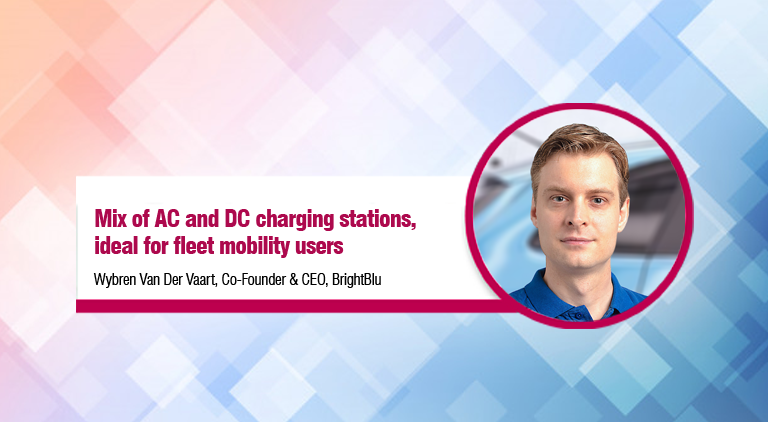Mix of AC and DC charging stations, ideal for fleet mobility users
By EPR Magazine Editorial September 5, 2019 7:08 pm IST
By EPR Magazine Editorial September 5, 2019 7:08 pm IST

Wybren Van Der Vaart, Co-Founder & CEO, BrightBlu in an interaction with Athira Bejoy discusses how with higher utilisation and integration of charging services, private enterprises will be able to build profitable business models around the charging infrastructure.
Walk us through your journey into automobile sector and venturing into EV?
I have been working in the electric mobility space for over seven years now. I started my career at a Netherlands based consulting firm called EV Consult and did a number of advisory projects for the national government of the Netherlands, as well as for a number of large Dutch cities. Most of these projects focused on the roll-out of smart charging infrastructure throughout the Netherlands, in public, semi-public as well as private space. This gave me an early insight into the potential of electric mobility. I continued my journey at the Netherlands Consulate General in Mumbai, where I focused on cleantech opportunities for Dutch companies in the Indian market. Post this we set up a public private partnership with a number of Dutch charging solutions companies and the Dutch government to develop business in the Indian market.
The merger of Asia Electric and DrivAMP resulting in the launch of BrightBlu, is the logical continuation of this journey. We bring together over 20+ years of experience with global leading companies across US, EU and Indian markets in the field of EV charging infrastructure and believe we have the vision and the ability to move the electric mobility market in India forward.
Can you please walk us through the journey of this merge of Asia Electric and DrivAMP?
Asia Electric, founded in 2014, offered intelligent charging solutions for electric vehicles and had working with several Indian OEMs and grid operators to supply charging solutions for the Indian market. Asia Electric was furthermore part of a public private partnership with the Dutch government to transfer technology and knowledge in the field of electric mobility.
DrivAMP, founded by three engineers from VIT university, has been active since 2016 and has in-house developed the technologies required for smart charging of electric vehicles. DrivAMP supplied the technology to hardware manufacturers and charge-point operators in India. Our companies had the opportunity to meet in early 2019 and we found great synergies in working together.
How far will the government’s policies on EV be favourable for your pilot project?
What infrastructure and resources are required to support mass adoption of EV?Can private enterprises profitably build out the necessary charging infrastructure or will governments need to step in to force and/or subsidise charger installation?
As the number of electric vehicles increases it will lead to higher utilisation of the charging infrastructure installed. With higher utilisation and integration of charging services, private enterprises will surely be able to build profitable business models around the charging infrastructure. Government incentives like FAME-II can help to subsidise costs in the short term where the number of electric vehicles are low.
Will power grids be able to handle increased electricity demand from EVs?
As electric vehicles become more prevalent, there will be a need for a greater volume and variety of available charging options. The growth of EV’s across India will be instrumental in transforming the power sector. The global electricity consumption from electric vehicles is expected to go from below 1 per cent to 5-7 per cent of the projected global electrcity consumption by 2040. This level of growth provides a great opportunity for power utilities, energy retailers and network operators. The increased electricity demand will offset the stagnation in energy demand growth. Renewable energy sources and smart charging standards will be critical to manage peak load demands, decrease unpredicability and lower carbon emissions.
Renewable energy sources and smart charging standards will be critical to manage peak load demands, decrease unpredicability and lower carbon emissions.
Wybren Van Der Vaart, Co-Founder & CEO, BrightBlu
We use cookies to personalize your experience. By continuing to visit this website you agree to our Terms & Conditions, Privacy Policy and Cookie Policy.